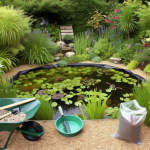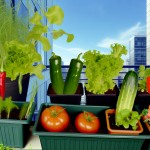The Power of Peppermint in the Garden
Planting peppermint in your garden can be a game-changer, offering a host of benefits that range from natural pest control to boosting overall garden health. As a seasoned gardener, I’ve found peppermint to be one of the most versatile and beneficial plants you can add to your green space. Here’s how you can harness its power effectively:
1. Natural Pest Repellent
Peppermint is known for its strong aroma, which is not only refreshing to humans but also repellent to many common garden pests. Here’s how you can use it:
- Ants: The scent of peppermint confuses ants and disrupts their scent trails. Planting peppermint around the perimeter of your garden can help keep these tiny invaders at bay.
- Aphids: Aphids are notorious for damaging a wide variety of plants. A peppermint spray, made by boiling peppermint leaves in water and then straining the mixture, can be used to keep aphids off your plants.
- Mice & Rats: Placing peppermint plants at entry points or near problem areas can help deter rodents from invading your garden.
2. Enhances Pollinator Activity
Peppermint flowers are highly attractive to beneficial pollinators such as bees and butterflies. By planting peppermint, you’re not only protecting your garden from pests but also inviting pollinators that will help your garden thrive.
3. Soil Health Improvement
Peppermint’s root system helps to aerate the soil, improving its structure and health. Better soil structure enhances water retention and drainage, which is essential for the overall health of your garden.
4. Companion Planting
Peppermint can be a great companion plant in vegetable gardens. It pairs well with:
- Tomatoes: Helps repel aphids, whiteflies, and even certain beetles.
- Cabbage & Kale: Keeps away pests like cabbage moths and flea beetles.
- Carrots: Reduces the risk of carrot root fly infestation.
5. Harvesting and Utilizing Peppermint
The best time to harvest peppermint is just before it blooms, when the essential oils are at their peak. Here’s how you can use harvested peppermint:
- Drying: Dry the leaves by hanging the stems in a dry, dark place. Once dried, you can use the leaves for homemade teas and pest repellent sprays.
- Fresh Use: Fresh leaves can be used in cooking, teas, and for making scented sachets to repel pests indoors.
6. Controlling Peppermint Growth
Peppermint is known for its vigorous growth and can become invasive if not managed properly. To control its spread:
- Plant in Containers: Use large pots and place them strategically around your garden to keep the roots contained.
- Garden Barriers: If planting in the ground, use root barriers to prevent peppermint from overtaking other plants.




GIPHY App Key not set. Please check settings